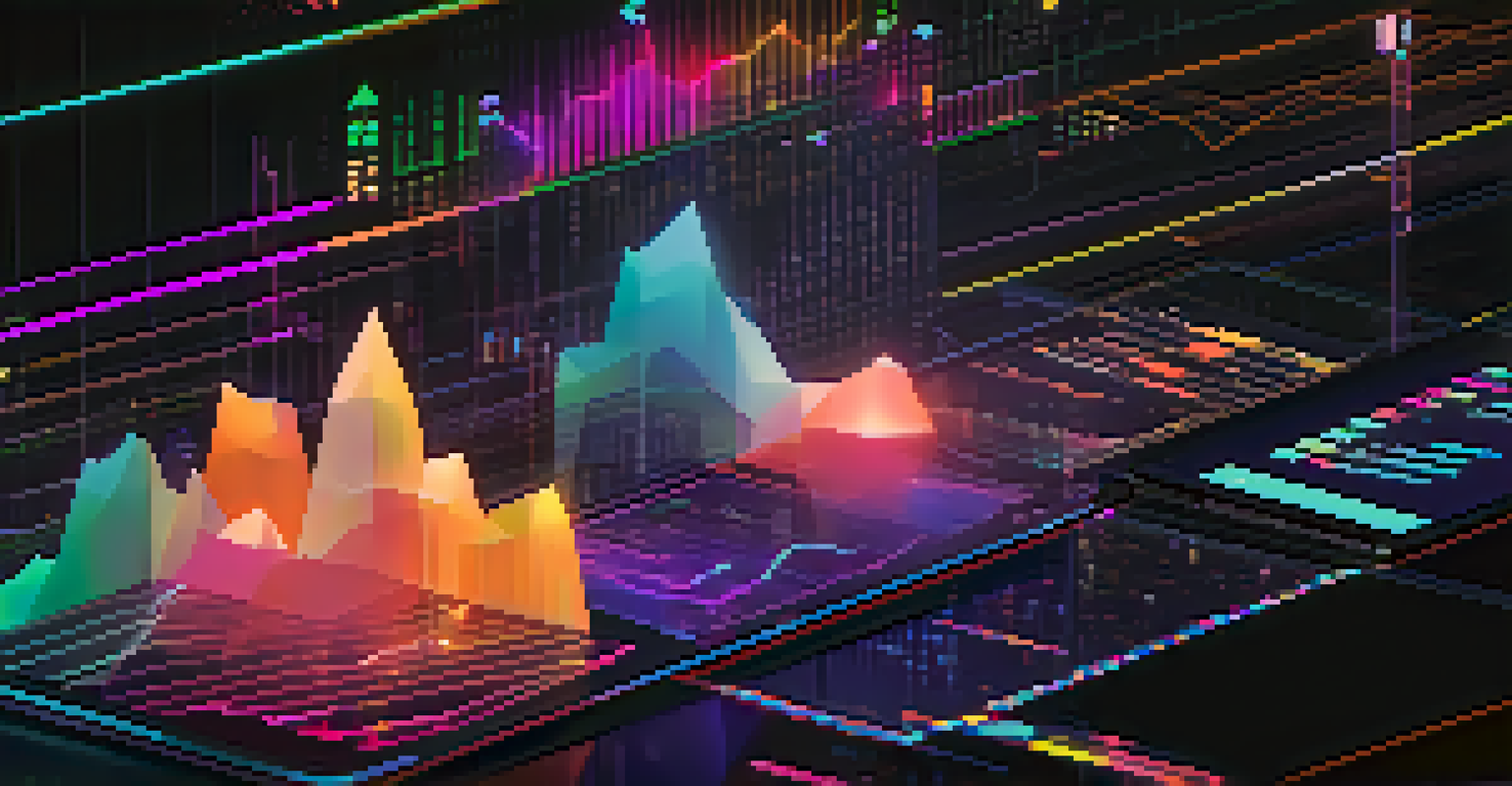The Impact of NFTs on Digital Ownership: A Comprehensive Guide

Understanding NFTs: The Basics of Digital Ownership
NFTs, or non-fungible tokens, are unique digital assets that represent ownership of a specific item or piece of content. Unlike cryptocurrencies like Bitcoin, which are interchangeable, each NFT has distinct characteristics that make it one-of-a-kind. This uniqueness is what gives NFTs their value and appeal in the digital marketplace.
The future of ownership is digital, and NFTs are paving the way for creators and collectors alike.
Think of NFTs as digital certificates of authenticity. When you buy an NFT, you’re not just purchasing a digital file; you’re acquiring proof that you own that file, whether it’s artwork, music, or even virtual real estate. This ownership can be verified on a blockchain, providing transparency and security for both buyers and sellers.
As the digital landscape continues to evolve, understanding NFTs is crucial for artists and consumers alike. They offer a new way to monetize digital creations while empowering creators to retain control over their work, changing the game in the world of digital ownership.
How NFTs Change the Concept of Ownership
Traditionally, ownership meant having a physical item in your possession, but NFTs challenge this notion by introducing digital ownership. With NFTs, you can own a piece of digital art or a tweet that has been tokenized, which can be just as valuable as a physical painting or signed memorabilia. This shift allows for a broader definition of what it means to 'own' something in the digital age.

Consider the example of digital art. An artist can sell their work as an NFT, ensuring they receive royalties every time the artwork is resold. This model not only benefits the original creator but also fosters a thriving secondary market, where collectors can buy and sell digital pieces without diminishing the value of the original work.
NFTs Redefine Digital Ownership
NFTs challenge traditional notions of ownership by allowing individuals to own unique digital assets that can be verified on a blockchain.
Ultimately, NFTs empower creators by allowing them to engage directly with their audience and monetize their work in new ways. This evolution is reshaping how we think about ownership and value in the digital realm.
The Role of Blockchain in NFT Ownership
At the heart of NFTs is blockchain technology, which provides a decentralized ledger for recording ownership and transaction history. This technology ensures that each NFT is verifiable and cannot be duplicated, making it a secure way to establish ownership of digital assets. Think of blockchain as a digital notary that verifies every transaction.
NFTs give artists a new platform to monetize their work while maintaining control over their intellectual property.
Every time an NFT is bought or sold, the transaction is recorded on the blockchain, creating a transparent history of ownership. This not only protects buyers from fraud but also allows artists to prove their authenticity and provenance, which is vital in the art world. Without this layer of security, the value of NFTs would be significantly diminished.
As blockchain technology continues to advance, it’s likely we’ll see even more innovative applications for NFTs, further solidifying their role in digital ownership. This evolving landscape opens the door for new opportunities for creators and collectors alike.
NFTs and Intellectual Property Rights
One of the most significant impacts of NFTs on digital ownership is their relationship with intellectual property (IP) rights. When someone purchases an NFT, they acquire ownership of the digital asset, but this doesn’t always mean they own the underlying IP. Understanding this distinction is critical for both buyers and sellers in the NFT market.
For instance, an artist may sell an NFT of their artwork, granting the buyer ownership of that specific token, while retaining the copyright to the image itself. This means the buyer cannot use the image commercially without the artist's permission. This separation of ownership and IP rights ensures that creators can protect their work while still benefiting from the sale of NFTs.
Blockchain Ensures NFT Authenticity
Blockchain technology provides a secure and transparent method for verifying NFT ownership and transaction history, protecting both buyers and creators.
As the NFT market matures, clear guidelines surrounding IP rights will become increasingly important. Buyers should always be aware of what rights they are acquiring when purchasing an NFT to avoid potential legal issues down the line.
The Environmental Concerns of NFTs
While NFTs revolutionize digital ownership, they also come with environmental concerns, primarily due to the energy consumption of blockchain networks. Many NFTs are built on Ethereum, which relies on a proof-of-work consensus mechanism that requires significant computational power. This raises questions about the sustainability of NFTs in the long term.
For example, a single NFT transaction can have a carbon footprint similar to that of driving a car for several miles. As awareness of climate change grows, the environmental impact of NFTs has sparked debates within the community, prompting calls for more sustainable practices and technologies.
Fortunately, solutions are emerging, such as transitioning to proof-of-stake models and using eco-friendly blockchains. As the industry evolves, embracing sustainable practices will be essential to ensure that NFTs can thrive without harming the planet.
NFT Marketplaces: Where Digital Ownership Happens
NFT marketplaces are the platforms where buyers and sellers come together to trade these unique digital assets. Some of the most popular marketplaces include OpenSea, Rarible, and Foundation, each offering a variety of features for creators and collectors. These platforms facilitate transactions while providing tools for artists to showcase their work and connect with potential buyers.
Navigating NFT marketplaces can be overwhelming, especially for newcomers. Each platform has its own rules, fees, and community guidelines, so it’s essential to do your research before diving in. Understanding the nuances of different marketplaces can make a significant difference in your experience as a buyer or seller.
Environmental Impact of NFTs
The energy consumption associated with NFTs raises environmental concerns, prompting the need for more sustainable practices in the industry.
Moreover, these marketplaces often feature curated collections and community events, fostering a sense of belonging among users. This vibrant ecosystem not only supports digital ownership but also helps build a community around the art and creativity that NFTs represent.
The Future of NFTs and Digital Ownership
As technology continues to evolve, the future of NFTs and digital ownership looks promising. With advancements in blockchain and increasing mainstream adoption, we can expect NFTs to play an even more significant role in various industries, from gaming to real estate. This growth will likely lead to new use cases and applications that we can't yet envision.
For instance, the integration of NFTs into virtual reality environments could create immersive experiences where users can own and trade virtual assets in real-time. Additionally, we may see NFTs being used for ticketing, identity verification, and even digital fashion, further expanding the possibilities of digital ownership.

Ultimately, as more people embrace NFTs, a cultural shift towards valuing digital creations will occur. This transformation will redefine how we interact with art, media, and intellectual property, paving the way for a future where digital ownership is not just a trend but a fundamental aspect of our lives.